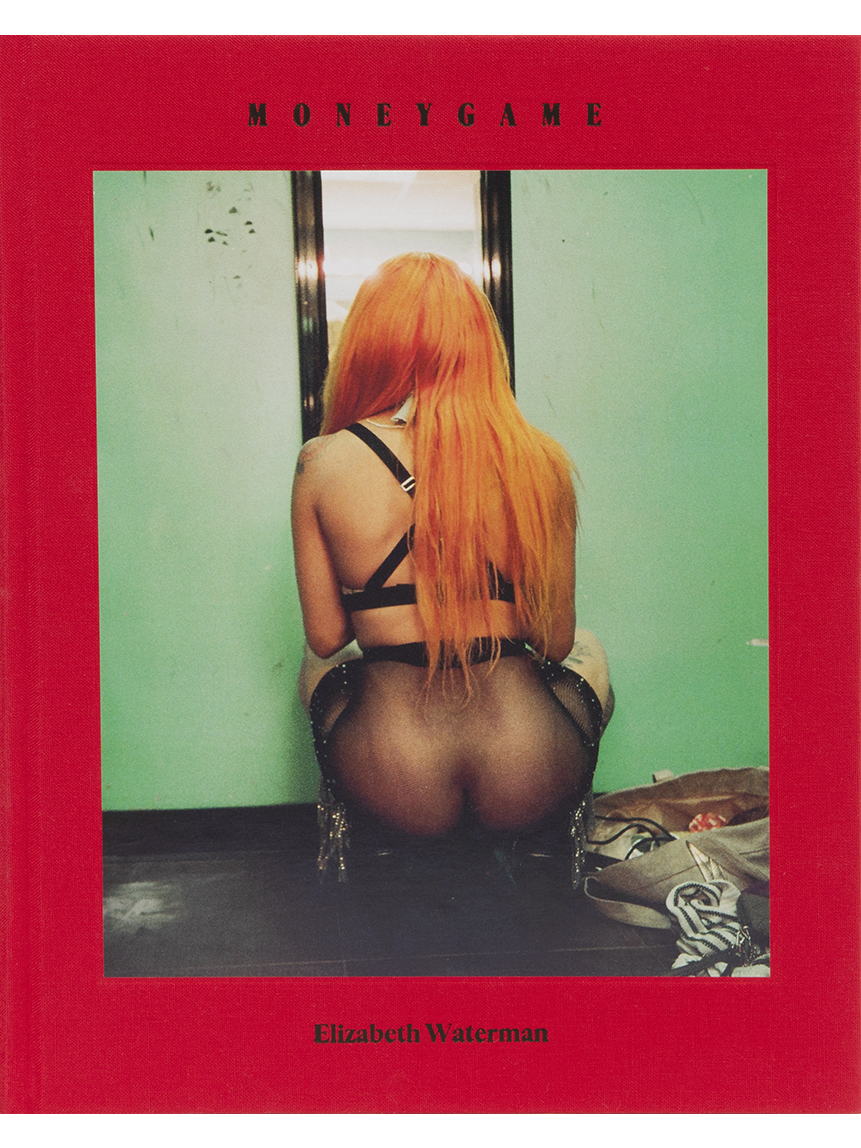Moneygame / Elizabeth Waterman
“For the last four years,” says American fine art photographer Elizabeth Waterman, “I have spent most of my Saturday nights in strip clubs, photographing and building a rapport with the dancers who make their livelihoods there. I’ve captured the girls climbing the pole, giving lap dances in the VIP section, putting on glittery outfits, and counting their dollars at the end of a long night.”
With the unique perspective and kindred compassion of a young female artist building her own body of work, Waterman celebrates their humanity and commitment to mastering their art in service of larger life goals. She shot the photos from 2016 to 2020 – primarily on 35mm and 120mm film – in Las Vegas, Los Angeles, Miami, New Orleans, and New York. Each dancer depicted has given permission to be photographed and published.
Popular media has long characterized strip clubs as gritty dens of ill repute. The truth is, there are many dimensions and nuances to the culture. By necessity, exotic dancers are highly competitive athletes, and consummate performers. They are also women using the profession as a well-considered strategy to pay off student loans, earn money to raise their children, buy a home, or launch a business.
While statistics about the sex industry are unreliable at best, those regarding strip clubs are a matter of public record. There are more than 4,000 such establishments in the U.S., generating more than six billion dollars annually, and providing living wages for about 58,000 dancers, bartenders, and other employees. Exotic dancers give stage shows for male and female patrons, demonstrating “tricks” on stationary or rotating poles, lap dances, and acts in private rooms. On a good night, a dancer can make $2,000 or more. They find the courage to preserve and maintain their dignity, and in rarified moments, they seem to transcend it all with ethereal, dazzling grace.
Waterman says, “First and foremost, this project would never have gotten off the ground without the trust and generosity of the remarkable women in these images. Thank you.”
“For the last four years,” says American fine art photographer Elizabeth Waterman, “I have spent most of my Saturday nights in strip clubs, photographing and building a rapport with the dancers who make their livelihoods there. I’ve captured the girls climbing the pole, giving lap dances in the VIP section, putting on glittery outfits, and counting their dollars at the end of a long night.”
With the unique perspective and kindred compassion of a young female artist building her own body of work, Waterman celebrates their humanity and commitment to mastering their art in service of larger life goals. She shot the photos from 2016 to 2020 – primarily on 35mm and 120mm film – in Las Vegas, Los Angeles, Miami, New Orleans, and New York. Each dancer depicted has given permission to be photographed and published.
Popular media has long characterized strip clubs as gritty dens of ill repute. The truth is, there are many dimensions and nuances to the culture. By necessity, exotic dancers are highly competitive athletes, and consummate performers. They are also women using the profession as a well-considered strategy to pay off student loans, earn money to raise their children, buy a home, or launch a business.
While statistics about the sex industry are unreliable at best, those regarding strip clubs are a matter of public record. There are more than 4,000 such establishments in the U.S., generating more than six billion dollars annually, and providing living wages for about 58,000 dancers, bartenders, and other employees. Exotic dancers give stage shows for male and female patrons, demonstrating “tricks” on stationary or rotating poles, lap dances, and acts in private rooms. On a good night, a dancer can make $2,000 or more. They find the courage to preserve and maintain their dignity, and in rarified moments, they seem to transcend it all with ethereal, dazzling grace.
Waterman says, “First and foremost, this project would never have gotten off the ground without the trust and generosity of the remarkable women in these images. Thank you.”
“For the last four years,” says American fine art photographer Elizabeth Waterman, “I have spent most of my Saturday nights in strip clubs, photographing and building a rapport with the dancers who make their livelihoods there. I’ve captured the girls climbing the pole, giving lap dances in the VIP section, putting on glittery outfits, and counting their dollars at the end of a long night.”
With the unique perspective and kindred compassion of a young female artist building her own body of work, Waterman celebrates their humanity and commitment to mastering their art in service of larger life goals. She shot the photos from 2016 to 2020 – primarily on 35mm and 120mm film – in Las Vegas, Los Angeles, Miami, New Orleans, and New York. Each dancer depicted has given permission to be photographed and published.
Popular media has long characterized strip clubs as gritty dens of ill repute. The truth is, there are many dimensions and nuances to the culture. By necessity, exotic dancers are highly competitive athletes, and consummate performers. They are also women using the profession as a well-considered strategy to pay off student loans, earn money to raise their children, buy a home, or launch a business.
While statistics about the sex industry are unreliable at best, those regarding strip clubs are a matter of public record. There are more than 4,000 such establishments in the U.S., generating more than six billion dollars annually, and providing living wages for about 58,000 dancers, bartenders, and other employees. Exotic dancers give stage shows for male and female patrons, demonstrating “tricks” on stationary or rotating poles, lap dances, and acts in private rooms. On a good night, a dancer can make $2,000 or more. They find the courage to preserve and maintain their dignity, and in rarified moments, they seem to transcend it all with ethereal, dazzling grace.
Waterman says, “First and foremost, this project would never have gotten off the ground without the trust and generosity of the remarkable women in these images. Thank you.”
Signed by the Author
Photographs: Elizabeth Waterman
Editing and Sequencing: Tiago Casanova and Pedro Guimarães
Editing Assistant: Giacomo Alberico
Graphic Design: Joana Durães
Prepress: Pedro Guimarães
Color and Image Consultant: Chiara Merico
Print: Maiadouro
Print run: 560 copies
2021
XYZ Books
132 pages
21 x 27,5 cm
Hardcover
Offset Print
First edition
ISBN: 978-989-53182-0-9
_ _ _
Featured at
Whitehot Magazine of Contemporary Art
L'Oeil de la Photographie
LA Weekly
British Journal of Photography
Shoutout LA
Huck Magazine
Konbini Arts
Los Angeles Times
Collater.al








